Huawei Mate 20 Pro Hands-On: Gunning For iPhone XS
Huawei is on a roll, and the new Mate 20 Pro and Mate 20 show the Chinese phone-maker isn't wasting time on celebrating after overtaking Apple in Q2 in smartphone shipments. Now with an even greater focus on Artificial Intelligence, up to five cameras, a new 7nm chipset, and some mighty useful convenience features, the Mate 20 Pro and Mate 20 may just distract you from the Pixel 3 or iPhone XS.
Big notch or small notch?
As with the old Mate 10 Series, there are two versions of the Mate 20. The Huawei Mate 20 gets a 6.53-inch 2244 x 1080 "Dewdrop Display" with a minimal cut-out for the front facing camera. It uses an 18.7:9 aspect ratio.
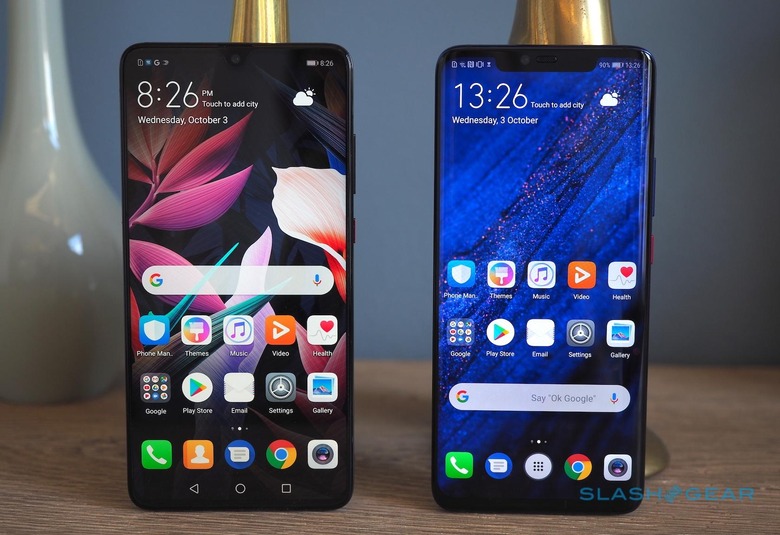
The Huawei Mate 20 Pro, meanwhile, gets a 6.39-inch curved OLED screen with HDR support, clocking in at 3120 x 1440 resolution. It has a narrower, taller 19.5:9 aspect ratio, and an "octa-curve" design where the front and back glass is curved at all four edges. It also packs a more considerable notch, which Huawei has filled with a 3D depth-sensing camera.
They're handsome phones, though only the Mate 20 Pro is IP68 water and dust resistant. Huawei will offer Pink Gold, Midnight Blue, Emerald Green, Black, and its shimmering Twilight colors, along with a so-called "Hyper Optical Pattern" which covers the back of the phone with very thin, hairline grooves. Almost too subtle to feel, they nonetheless add a little extra grip in your hand.
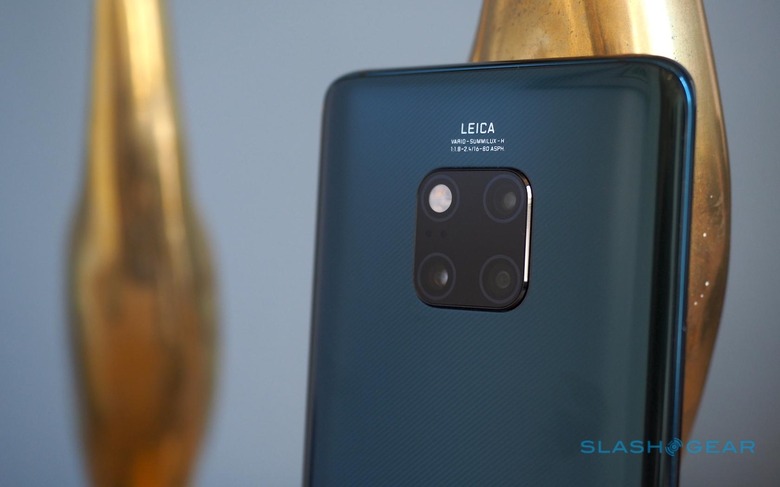
An eye on AI
Inside, both use Huawei's own Kirin 980 processor. That promises a roughly 20-percent speed improvement compared to the old chipset, and a roughly 40-percent power efficiency improvement. A total of eight cores are onboard: two running at 2.6 GHz for peak performance, while at the other end four 1.8 GHz cores take care of low-power tasks when you want the hit on your battery to be minimal.
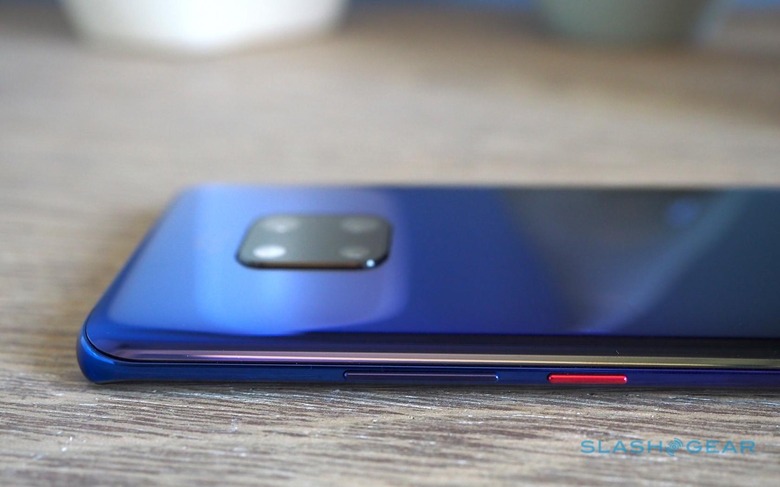
In the middle, though, are two 1.92 GHz cores. These allow Huawei to wake only the most appropriate silicon for the task at hand, giving the Mate 20 and Mate 20 Pro more flexibility overall. They're not the only new additions, mind.
Last year's Mate 10 Series had a single NPU, or Neural Processing Unit: the special cores that Huawei developed for on-device artificial intelligence and machine learning tasks. The Kirin 980 gets two NPUs, boosting AI performance by around 134-percent. They're not identical, however: one is more frugal than the other, so that the Mate 20 Series can shift into a more power-efficient state for less intensive tasks.
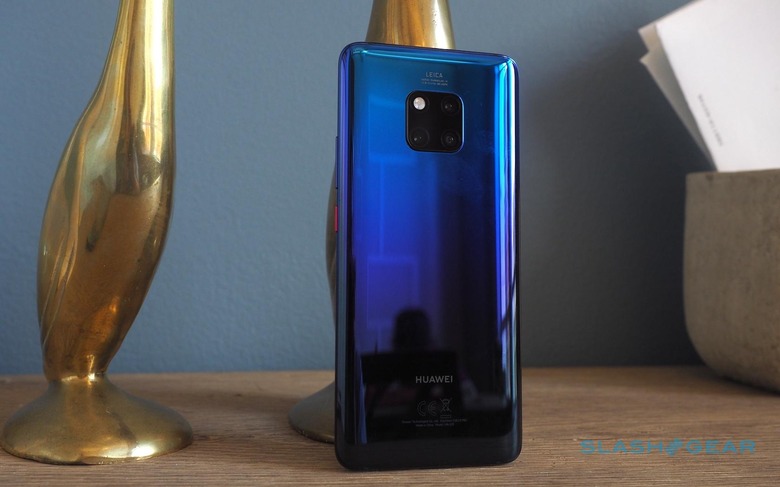
In tandem, though, there's a big uptick in what the Mate 20 and Mate 20 Pro can do. With a single NPU, for instance, Huawei could recognize the contours of objects for recognition; with dual NPUs, it can make out the particulars. Real-time image processing can be done on video now, not just photos, while real-time object segmentation is much more precise.
It's part of a big bet on AI from Huawei, with the company making ambitious predictions for the years ahead. "By 2025, we predict that 90-percent of consumers will in some way be benefiting from intelligent services," Peter Gauden, Global Senior Product Marketing Manager at the company, says, "applications or services that are based on machine learning or algorithms."
More cameras, more choices
One of the biggest applications for that will be around cameras. We've already seen what Google can do with computational photography on the Pixel 3, and now it's Huawei's turn to show off what it's been working on. In the case of the Mate 20 Pro and Mate 20, that means a total of three cameras on the rear.
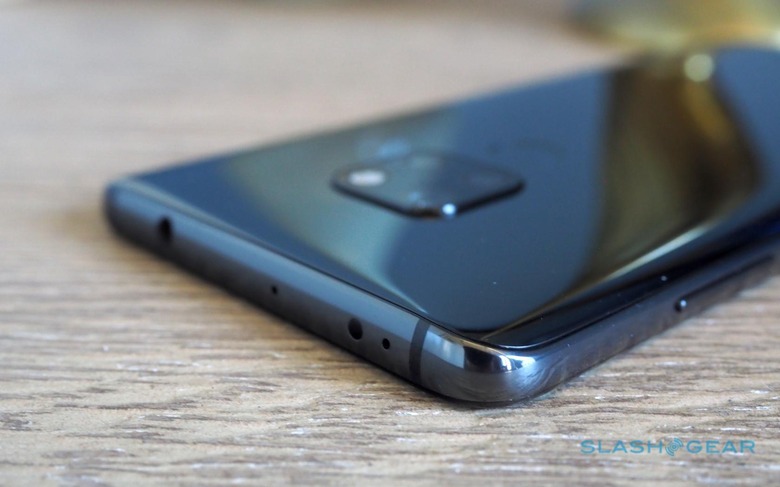
Co-developed with Leica, it covers the trifecta of normal, wide, and telephoto sensors. The Mate 20 Pro gets a 20-megapixel ultra-wide-angle sensor, covering roughly 107-degrees, with f/2.2 aperture. It's alongside a standard 40-megapixel f/1.8 camera, and an 8-megapixel, f/2.4 3x telephoto lens with optical image stabilization. The Mate 20, meanwhile, gets a 16-megapixel wide sensor, a 12-megapixel ultra-wide, and an 8-megapixel 2x telephoto. The fourth circle in the cluster is a dual-tone flash with smart temperature adjustment.
Why no monochrome sensor, as previous Huawei phones included? The company's argument is that modern sensors have improved so significantly even in the past year or two, that the need for a dedicated black & white sensor for the best possible contrast is no longer so important. There is, of course, a monochrome mode you can switch into still.
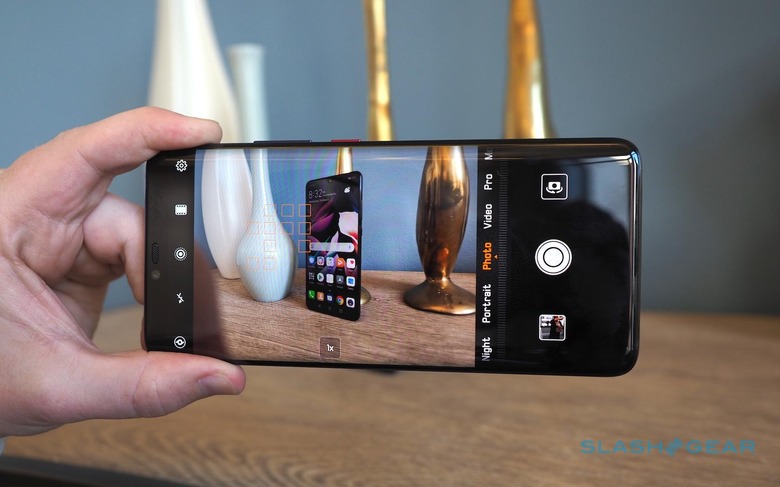
AI plays its part across the camera experience. For instance, Huawei's camera app can recognize when you might want to switch between regular and ultra-wide-angle, and toggle between them automatically. It can adjust to a macro mode that allows you to get as close as 2.5 cm without losing focus, too, while the Master AI 2.0 system to figure out what the camera is looking at and tweak the settings to suit can now differentiate between more than 1,500 different types of scene.
In dog mode, for example, the Mate 20 Pro can now tell the difference between 27 different breeds. AI 4D Predictive Focus, meanwhile, combines object recognition and active tracking: since the phone knows what the likely subject is, it can shift the focus lock around the scene as that moves.
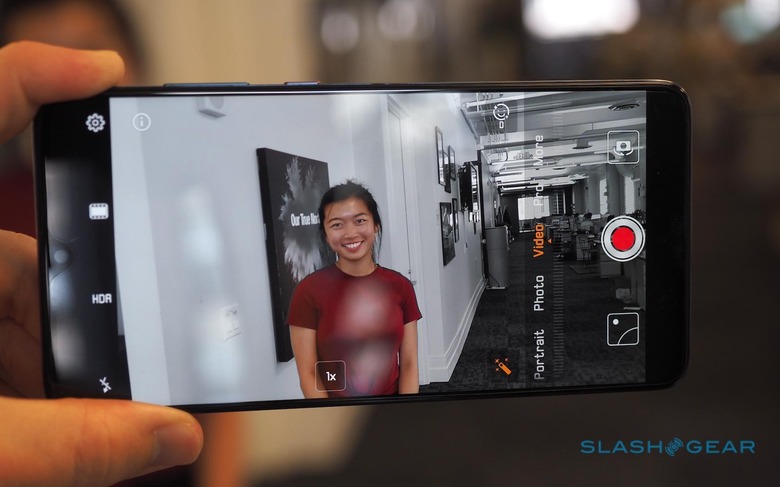
Then there's the AI Cinema Mode. That offers things like real-time video effects, such as vintage and portrait bokeh, or most dramatically the AI Portrait Color. That leaves everything in monochrome, apart from the subject which is left in color. Once you've recorded clips, Huawei's Spotlight Reel feature generates a short summary clip – complete with transitions and effects – based on content of a specific person in those recordings.
Security gets a face and finger upgrade
The Mate 20 Pro's 3D depth sensing camera array isn't just used for portrait mode selfies. Huawei is also tapping into it for facial unlocking, much like Face ID on the iPhone XS. It combines a 24-megapixel RGB camera with a dot projector, time-of-flight proximity sensor, floor illuminator, and an IR camera, for what the company says will be 30-percent faster unlocks than the Mate 10 Pro's old facial-recognition system.
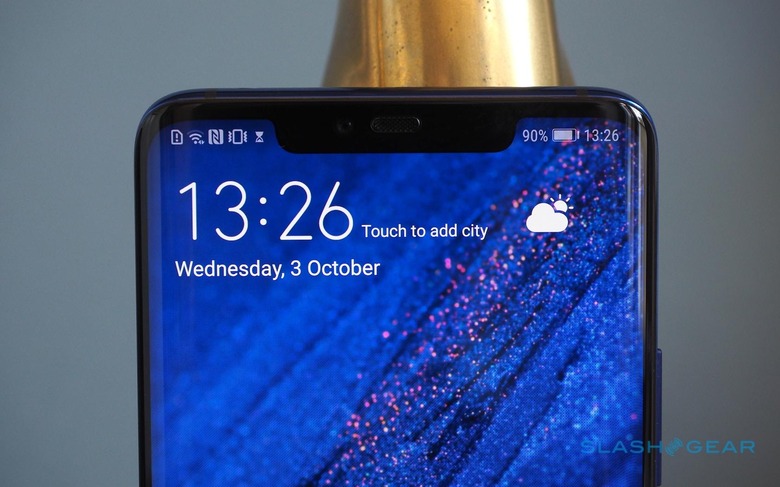
You can use it not only to access your phone, but for specific software, too. App Lock will allow you to secure individual apps, while File Cabinet will do the same thing but for files.
If you're not a fan of facial security, the Mate 20 Pro also gets an in-display fingerprint sensor. Unlike the Mate 20, which still has its sensor on the back, the more expensive of the two phones allows you to press your fingertip against a certain part of the screen – roughly two-thirds of the way down, in the center – and have it recognized there. Compared to the Mate 10 Porsche Design, meanwhile, it's said to be 20-percent faster.
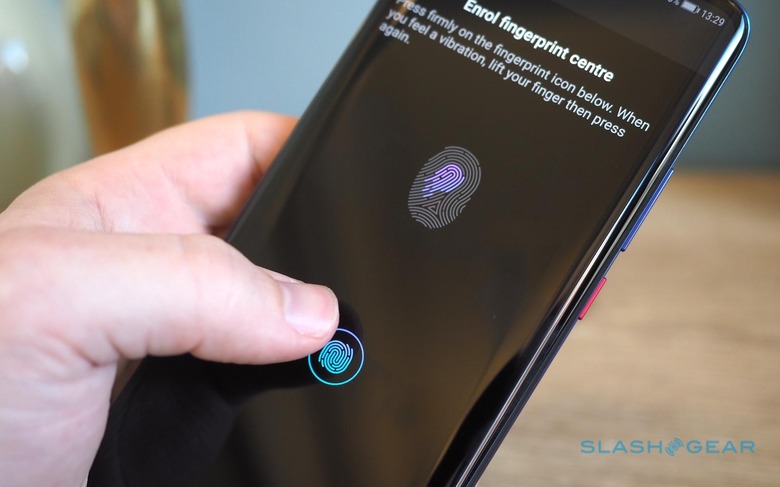
For third-party apps and services there's now a password vault, which can autofill your credentials when you authenticate with your face or fingerprint. All of those passwords and usernames are stored in a secured zone on-device, too, with the passwords encrypted.
EMUI 9.0, for better or worse
Huawei is unrepentant in its decision to clad Android with its own skin, but EMUI 9.0 does improve matters. Now based on Android 9 Pie, it has seen the company's software engineers pare back many of the extraneous features, clean up some of the confusion, and consolidate where appropriate. The result still isn't pure Android, but it's definitely better.
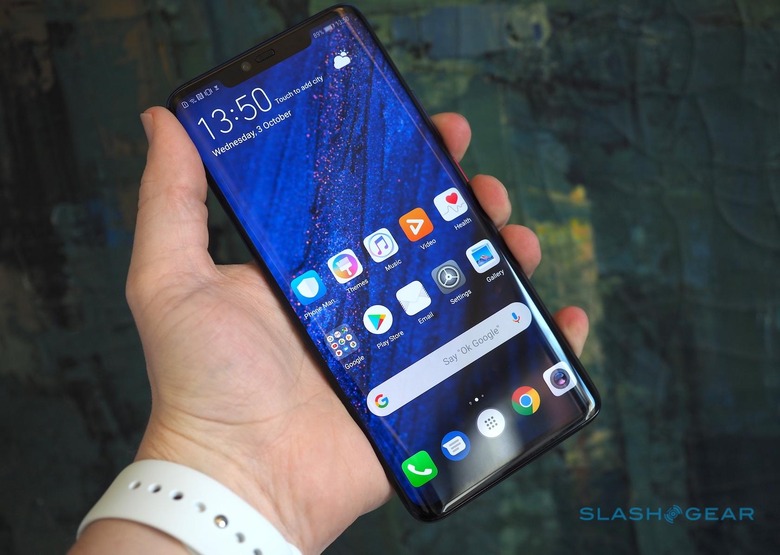
For example, similar settings now have a shared entry point in the UI, and the controls are more intuitive. New "advanced settings" submenus tidy up the less-frequently-accessed options. Other UI tweaks make for an easier one-handed experience: moving menus from the top to the bottom of the phone, for example, while introducing full-screen gesture navigation to the Mate 20 Pro.
Perhaps more useful long-term, though, are the performance improvements. Huawei says the Mate 20 delivers 47-percent faster system responsiveness when you tap the display, compared to the Mate 10, while built-in apps load 51-percent faster. Navigation within apps, like scrolling, is 42-percent smoother.
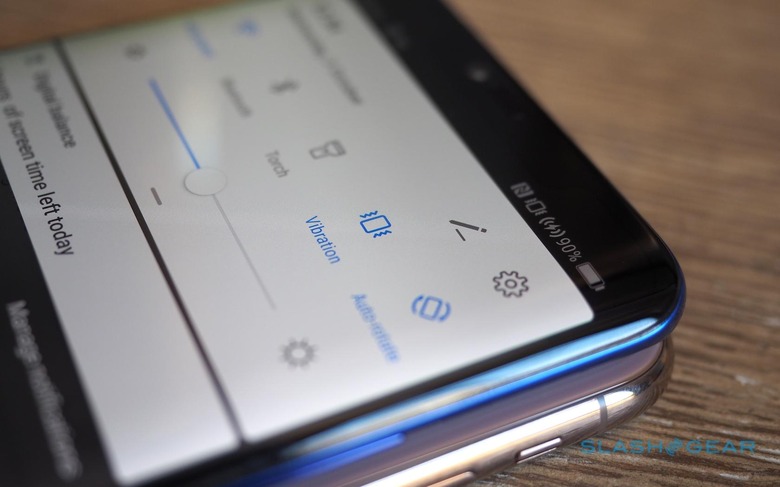
It's not just Huawei's own software that benefits, though. Chrome loads 43-percent faster than on a Samsung Galaxy Note 9, Huawei says, while Google Maps is ready 27-percent quicker, and Facebook 25-percent faster. It also insists it'll stay faster, too, enlisting the help of a third-party analysis firm to calculate that, after eighteen months, the Mate 20 should see a roughly 5-percent increase in app load time, versus 28-percent on the Note 9. We'll have to wait a year and a half to see just how true that turns out to be.
Like the Note 9, the Mate 20 Pro has a Desktop Mode. You can use a USB-C to HDMI adapter or Miracast wireless with a compatible TV or display; the phone can be used as a trackpad for navigation, or show a completely different app altogether.
Power to share
Big phones need big batteries, and Huawei's 2018 flagships each step things up from last year's devices. The Mate 20, for instance, has a 4,000 mAh battery: the same, indeed, as the Mate 10 Pro offered in 2017. As for the Mate 20 Pro, that now clocks in at 4,200 mAh.
Huawei doesn't just envisage the Mate 20 Pro using all that power itself, mind. Though the phone has regular wireless charging, it can also convert into a Qi charger in its own right. After tapping the option in the settings, I could put an iPhone XS Max back-to-back with the Mate 20 Pro and start recharging it.
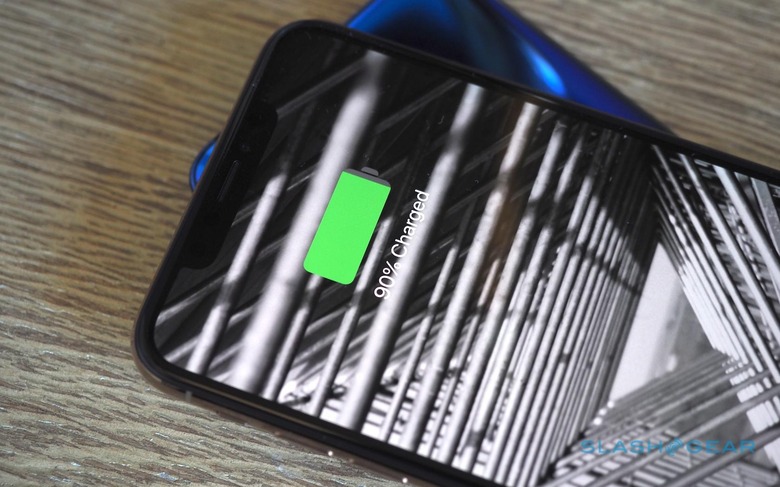
When you do need to recharge the Huawei, there's a new supercharging system which promises to be even faster than before. The Mate 20 Pro, in fact, will get from zero to 70-percent in thirty minutes, Huawei says, with a 40W wired charger. It also supports 15W wireless charging, twice the rate that an iPhone XS will handle.
The Mate 20, meanwhile, isn't quite so advanced. It gets the old supercharging system previously found on the Mate 10 Pro, though that still means roughly a 50-percent charge in half an hour.
Storage you can't share
Huawei may be promoting generosity with power, but when it comes to storage the Mate 20 series will be a lot less flexible. The phones use a new removable memory standard which the company is calling NM. It looks like a SIM card, and indeed it gives Huawei a lot more flexibility in how it offers its phones: dual SIM, or SIM + NM card, without having to worry about different tray sizes.
For users, though, it's likely to be a headache. For a start, you'll only be able to buy NM cards from Huawei, at least initially. Those with a drawerful of microSD cards aren't going to be pleased.
Wrap-up
It's a bad idea to underestimate Huawei. The phone-maker demonstrated it was onto something with the P20 Pro's incredible camera, and now the Mate 20 series builds on that performance as a capable all-rounder. Speed, huge batteries, great displays, and practical applications of AI all underscore just how seriously Huawei is taking the segment.
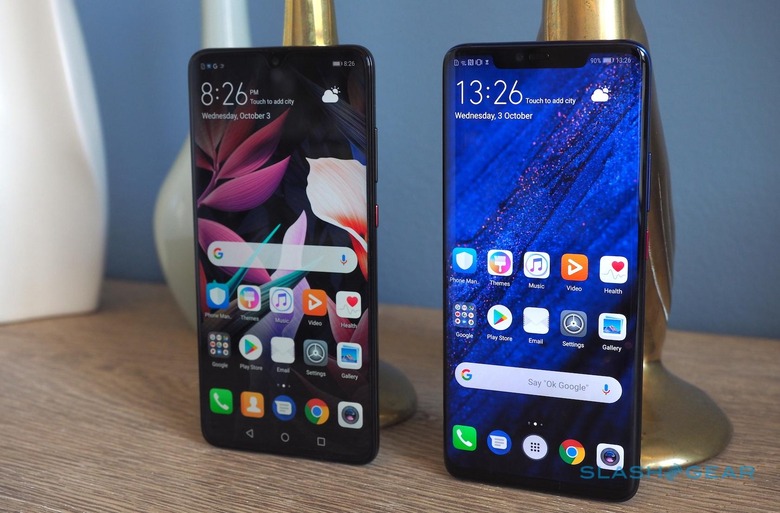
The lingering question, of course, is whether external factors dim the Mate 20 series' shine. Huawei isn't exactly popular with the US government right now; the knock-on effect there has been a general reluctance among carriers to partner with the phone-maker. You can have the best device in the world, but you also need people to be able to buy it.
We'll be putting the Huawei Mate 20 Pro through its paces to see if the reality lives up to the promise. As for pricing and availability, they will follow in due course.
UPDATE: The Huawei Mate 20 will be made available from the 16th of October, 2018, for 799 Euro and 849 Euro for the 4GB+128GB and 6GB+128GB versions respectively. The Mate 20 Pro will be made available from the 16th of October, 2018, with its 6GB RAM and 128GB internal storage size for 1049 Euro.
